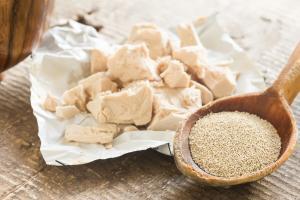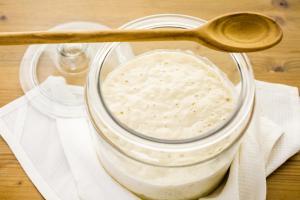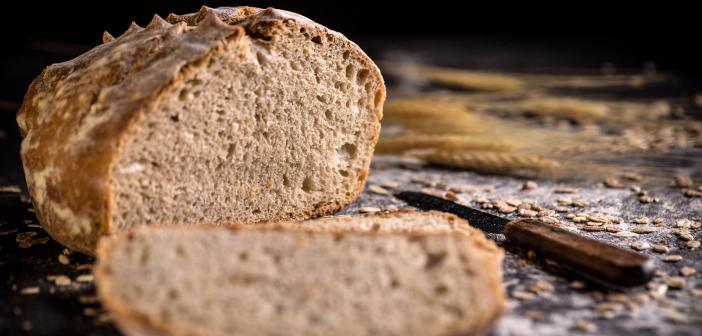Forget needing to be sliced! Frankly, the best invention of all time might just be bread itself.
We can only imagine how the first people that stumbled upon this chemical interaction felt when their lumpy dough transformed into an air-filled, yeasty loaf of fragrant bread. Today we take the magic of yeast almost for granted and forget the incredible biological processes that happen every time we bake.
However, there is one form of bread that keeps us close to those early baking roots. Sourdough is an ancient, highly prized form of bread-making that takes advantage of the natural fermenting properties in flour to grow and evolve in flavor for weeks, months and even years at a time.
Most sourdough starter is begun with a simple packet of yeast from the grocery store. However, there is another way to find this fungi for the extra ambitious. With a little patience and planning, you can capture wild yeasts from the natural environment and incorporate them into your bread for an entirely unique texture and flavor.
Does that sound too crazy to be true? Let’s look at how it works.

What is sourdough?
Before you’re ready to capture wild yeasts, it’s important to have a basic understanding of sourdough bread itself. The dictionary definition of sourdough is that it’s a form of fermented dough that is incorporated into bread recipes in the place of the fresh yeast normally used.
From a scientific perspective, sourdough starters are natural leavens, meaning that the flour and water becomes invaded by yeasts (both commercial and wild) and friendly bacteria like lactobacillus that slowly break down the simple sugars in the mixture into lactic and other forms of acid. This creates the tangy taste and complex flavor sourdough is so renowned for.
History of sourdough
Fermented foods have been enjoyed by humans for long before written history. The ancient Egyptians were among the first to capture wild yeasts for their breads and beers, and ancient bakers maintained pots of active starter that they fed with flour and water every few days.
Before the invention of commercial yeast packets, sourdough starters were one of the only ways that leavened bread could be made. During the California Gold Rush, the pots of starter that miners brought with them were often considered as valuable as the gold they dug up. To this day, San Francisco still has a thriving sourdough bread culture, and many bakeries today rely on the same starters that were used in the 1840s.
After the active ingredient in yeast was isolated in the 1860s, sourdough fell out of favor for simpler breads. Making sourdough today harkens back to the early history of bread and allows you to experience the yeasty textures that our ancestors enjoyed.
Whether you make your sourdough from scratch or use a kit to get you started, the process is a rewarding way to slow down and think deeply about the food you eat.
Why should you eat sourdough?
Gluten sensitive people, rejoice! Sourdough is actually much easier to eat than regular forms of bread, and it’s all thanks to the bacteria that munch through the loaf. These hungry creatures leave behind lactic acid, which makes the vitamins and minerals in flour easier for the human body to access while also rendering the gluten much easier to digest. Because much of the sugar in sourdough has already been digested, it gets released into your bloodstream more slowly, which prevents spikes in insulin. In short, sourdough bread is a powerful fermented food full of easy-access nutrients for your body.
Beyond the health benefits, sourdough is an endlessly fascinating form of baking that offers a peek into culinary preferences around the globe. Whether you’re mixing together your very first batch or pulling out your trusted jar of thirty year old starter to use, no two loafs of sourdough will ever taste exactly the same, offering some truly living proof of the magic that flour, water and simple yeasts can create together.
What are wild yeasts?
Though sourdough can be made with regular yeasts, the true magic happens when you harness the power of wild yeasts from the natural environment. These tiny fungi naturally exist in the air and on sweet-smelling fruits and plants, specifically vineyard grapes and shaded bushes.
When given proper growing conditions, yeast can multiply in size over ten times in just twelve hours. Lactobacilli, the bacteria in sourdough, has a symbiotic relationship with wild yeast, meaning that when the two are combined together with flour and water they create carbon dioxide bubbles that get trapped in the fibers of bread dough, producing high rising loaves. Incorporating wild yeasts into your sourdough will give it a distinctive taste that commercial packets can’t come close to.

Catching and using your own yeast for sourdough
Catching and using wild yeasts for a sourdough starter is a topic shrouded in mystery in modern society, but it doesn’t have to be that way. People have effectively caught wild yeasts for thousands of years, and with a little patience you are sure to succeed as well.
There are endless variations to making a starter, but this basic process is simple to start with.
- First, choose a time of year when the outside temperature won’t dip below 70 deg F (21 deg C). This is the temperature range that allows wild yeast to best thrive.
- When you’re ready to begin, you’ll need organic wheat flour, a quart-sized mason jar and filtered water. Organic flour is important to ensure that there aren’t any chemicals in the mix that will contaminate your dough.
- Next, mix together a quarter cup of water with a quarter cup of flour and pour the mixture into your quart jar. Cover the jar with a thin cloth (securing it with a rubber band) and place it outside in a shaded place next to a tree or bush.
- For the next nine days, add another quarter cup of both flour and water to your mixture every day and place it back outside. By the last few days you should start to notice some bubbling on the surface of your mixture and a sour, yeasty smell. If the flour keeps separating from the water and fails to smell fermented, you likely didn’t capture enough yeast and should clean out the jar and start again in a different spot.
- If your mixture looks bubbly and has the proper smell by the tenth day, the next step is to pour the entire mixture into a clean jar and place it in the fridge. Continue to feed it a quarter cup of flour and water every day for the next week, putting it back in the fridge after each feeding.
- By day 17, your starter is ready to be baked into delicious breads, pizza crusts, soft pretzels and anything else you can think of. Plan to use half your starter or less, and continue to keep the other half fresh by continuing to add flour and water daily.
- If you want your starter to go dormant, simply feed it weekly until you are ready to bake with it again, at which point you should feed it daily for at least a week before baking.
Resources for experimentation
Once you get your starter going, there is no limit to the number of ways you can modify it to get unique tasting breads. Sourdough can be made with a wide variety of flours, including rye and whole wheat. You can even buy a starter online to speed up the process and add a specific taste to your dough. Some people incorporate potato pieces or milk into their starters for a change in texture, while others let their starters age and evolve for years until the taste becomes completely distinctive.
If you’re starting your sourdough adventures and need some resources to help you get creative, the websites and books listed below are a great place to get started.
Top sourdough books:
- How To Make Sourdough by Emmanuel Hadjiandreou: With 45 unique recipes, this book will give you plenty of sourdough inspiration.
- Classic Sourdoughs: A Home Baker’s Handbook by Jean and Ed Wood: If you want to find ways to replace your favorite breads with easy sourdough substitutes, this book will provide the recipes you need.
- Sourdough: Recipes For Rustic Fermented Breads, Sweets, Savories and More by Ngoc Minh Ngo: For those looking for traditional sourdough recipes that harken back to a time when life was simpler, this book is a must for the kitchen bookshelf.
Top sourdough websites:
- King Arthur Website: A comprehensive guide to getting your own starter going.
- The Sourdough School: This UK school is a gem of sourdough recipes and tasteful pictures.
- Breadtopia: For visual learners, this site includes a video of the entire starter process (using a unique technique with pineapple juice!) and plenty of pictures.
In summary
When you combine water, flour and wild yeasts together to create sourdough, something truly magical happens. Keep yourself connected with the ancient baking practices of our ancestors and produce nourishing, easily digestible breads for yourself in the process, by learning to maintain and use your own sourdough starter. It’s a simple process that will provide you with savory homemade breads for years to come.
